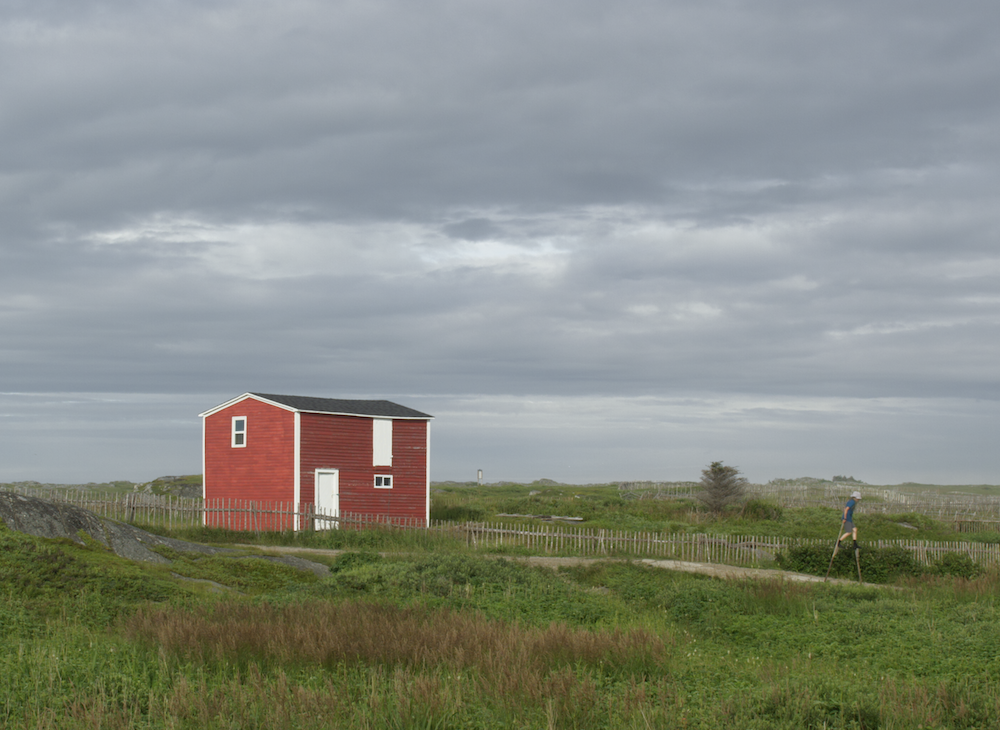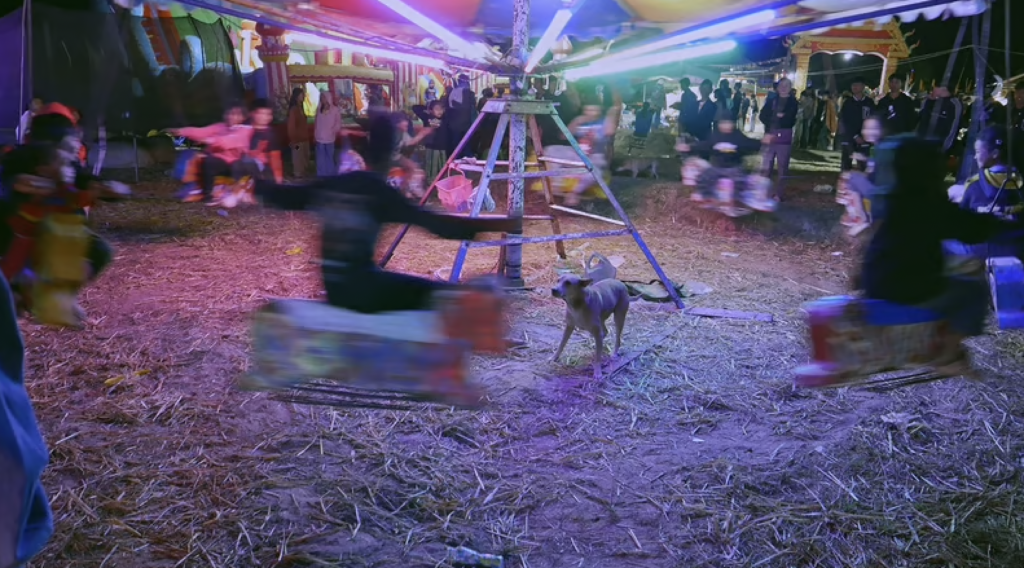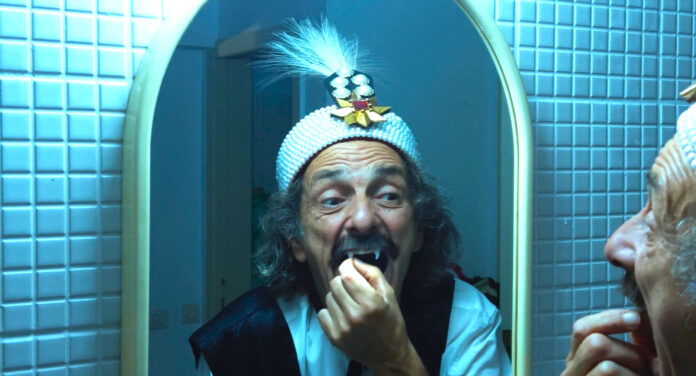As the 2025 New York Film Festival came to a close on October 13, I was struck by how many experimental treasures had screened. The festival showcased 16 features in its “Currents” program dedicated to formally daring work from rising international talents and esteemed auteurs alike, all pushing the boundaries of the medium. The following is half a dozen, spoiler-free reviews of our favorites. Write them down in your upcoming movie diary for 2026.
Dry Leaf (ხმელიფოთოლი, Germany/Georgia)
Easily one of the most surprising and captivating films of NYFF63, 40-year-old Georgian filmmaker Alexandre Koberidze’s film gorgeously captured his country’s hypnotic landscapes via the unique camera choice of a mid-2000s Sony Ericsson phone. What he has achieved is an abstract beauty combining the look of the Dogme95 avant-garde filmmaking movement with the contemplative thoughtfulness of Abbas Kiarostami and Frederick Wiseman.
This 186-minute melancholic mystery following a lonely middle-aged man on a quest to find his missing daughter is hauntingly profound. Leading actor David Koberidze (and real-life father of the director) conveys an addictive peace to the viewer on his travels, while curiously conversing with an invisible companion. The director’s younger brother, Giorgi envelopes the entire affair in a soothing and hypnotic musical score, truly making this film a family affair.
With countless sequences uncovering dilapidated rural football fields across the Georgian countrysides, it is perhaps important to share that the poetic title of the film is also a sports term: “dry leaf” refers to a football kick that produces an unpredictable landing of the ball. While you wait for its distributor A Cinema Guild to find a way to release this mini-monumental achievement, seek out the director’s equally impressive 171-minute excursion, What Do We See When We Look at the Sky? (2021), which is streaming on Mubi. Both films are in Georgian with English subtitles.
Hair, Paper, Water… (Tóc, Giấy và Nước…), Vietnam/France/Belgium)
Trương Minh Quý, director of last year’s Việt and Nam (2024) and cinematographer Nicolas Graux have made one of the year’s most enchanting family portraits. Shot on a 16mm Bolex camera, this unassuming look at a shamanistic Vietnamese “Rục” family, is vibrantly led by Mrs. Hậu, who was born in a cave more than 60 years ago. The sound design by Trương and Ernst Karel focuses on every living creature in the region (including bees, monkeys, tigers, and bats), while the camera eases its way through a series of moving snapshots, making this film a 71-minute ethereal experience you won’t want to overlook. While the film does not have U.S. distribution, it is managed by the Italian distribution company Lights On, who have acquired the international rights. It’s in Vietnamese and Rục with English subtitles.

Windward (Canada/US)
One of my favorite motion picture makers of the 21st Century, Sharon Lockhart has been restructuring the experience of cinema since her very first film Goshogaoka (1998), which premiered at the 1998 Sundance Film Festival. Capturing a girls basketball team while they execute elaborate (and actually choreographed) practice drills, Lockhart’s camera stays fixed in one place, recalling the project’s origin as a series of still photographs. By structurally translating the images into a series of moving cinematic pictures, the viewer gets caught up in the rhythm of the sounds and repetitive movements. What lives just outside the frame becomes just as interesting.
While you may be questioning if “durational cinema” is your cup of tea, Lockhart’s film Pine Flat (2006) might be the one that sets you on the genre’s path. Set in a rural village in California’s Sierra Nevadas, it presents 12 deliberately simplistic, 10-minute, 16mm shots of children waiting for the bus, reading a book in the grass, or wading in a pond. After 25 years of watching Lockhart’s cinematic meditations, I now find that they have lodged themselves alongside some of my own fondest childhood memories.
Likewise, Lockhart’s latest film Windward (which feels very much connected to Pine Flat) is comprised of 12 breathtaking landscapes and shorelines of Fogo Island off Newfoundland, Canada. Children appear and then disappear on the peaceful horizon, which may suddenly bring on an emotional surge in the viewer or simply add a kind of natural movement to Lockhart’s extended static takes. For those patient enough to fall into Sharon Lockhart’s photography and graceful moving pictures, even the particular order and the collective culmination of these 70 minutes she has chosen can bring a kind of bliss rarely achieved in cinema today. Keep your eyes glued to BAMPFA or similar fine art museums for an upcoming screening.
Little Boy (US)
For over 55 years, James Benning has been mesmerizing experimental film fans, and his most recent release will be no different. Little Boy is a structuralist journey through decades of U.S. history by way of tiny, methodically hand-painted models paired with poignant speeches and pop songs ranging from Dwight D. Eisenhower and Stokely Carmichael to Ricky Nelson’s “It’s Late” and Cat Power’s “The Greatest”. Feeling like Benning’s own life story, this 73-minute contemplation is a lovely companion piece to one of the filmmaker’s lesser-known films: American Dreams: Lost and Found (1984), which is composed entirely of Hank Aaron baseball memorabilia, set to 1950s commercials, and footnoted with actual handwritten diary entries by Arthur Bremer, who was convicted for attempting to assassinate presidential candidate George Wallace. Keep your eyes glued to the SF Cinematheque programming or similar experimental film series for this upcoming screening.

Back Home (回家, Hui Jia, Taiwan)
While legendary Taiwanese Tsai Ming-liang was hosting one of his recent retrospective screenings at BAMPFA last month, he mentioned that this new 65-minute film was an actual rumination on returning home to some of his previous filming locations. Showcasing the star of his pandemic feature Days (2020), Anong Houngheuangsy goes about his daily life at his home village in Laos. This transcendental treasure quietly captures varying states of habitation and disrepair, farm animals, rice fields, religious sites, highlighted by an endearing dog doing its absolute best to escape a carnival ride. For over 30 years, Tsai Ming-liang has been paving a road for observational, durational, and “hand-sculpted” cinema. Do whatever you can to catch this poignant moving picture, shot simply by Tsai using a small Canon camcorder and Leica camera. Since it doesn’t have U.S. distribution, seek it out via Homegreen Films, who has the film’s world sales rights.
Dracula (Romania)
Not to be confused with Radu Jude’s other film at NYFF (Kontinental ’25) or Luc Besson’s upcoming French adaptation of Bram Stoker’s 1897 novel, Dracula: A Love Tale, with this film Romanian cinema’s most exciting enfant terrible Radu Jude has delivered one of the messiest, most mind-bendingly memorable misadventures of 2025. After giving us two of the decade’s greatest highlights with Do Not Expect Too Much from the End of the World (2023) and Bad Luck Banging or Loony Porn (2021), Jude dives deep into this maniacal mishmash, attempting to connect the vampire mythos into just about every aspect of our troubled times. Cinematic legend Paul Schrader, who was in attendance at the screening (and who is well-known for walking out of films he does not care for) stayed throughout the entire 170 minutes.
Director Jude makes the viewer feel like he’s editing the movie on the fly, complete with outrageously funny non-sequitur interruptions in which he speaks directly to the audience, often riffing on his own previous sequence. From the get-go, Jude explains very quickly that this Dracula is “less of a spin on Bram Stoker and more like Frankenstein’s monster.” This anti-movie is as frustratingly absurd as it is cinematically delightful, pontificating the dilemmas of F.W. Murnau, Francis Ford Coppola, Ed Wood, Samuel Beckett, and Charlie Chaplin. Maniacal movie watchers, keep your eyes glued for a very limited theatrical release by 1-2 Special.
PS: I’ve even been pondering if this whole endeavor was a deep-cut homage to German exploitation director Ulli Lommel’s infamous (and long out of print) 2003 DVD re-release of Boogeyman II (1983). Lommel inserted nearly 20 minutes of himself talking directly to the camera (20 years later) into his previously maligned sequel, renaming it Boogeyman II: Redux Director’s Cut (2003), and attempting to explain why in fact he had purposefully “ruined” its release back in 1983 by making an anti-capitalist, nonsensical anti-movie. While I can’t prove that Radu Jude has ever seen Lommel’s redux, this kind of mad-scientist passion is the stuff my exploitation dreams are made of. FYI: Playing this Thursday at Alamo New Mission





